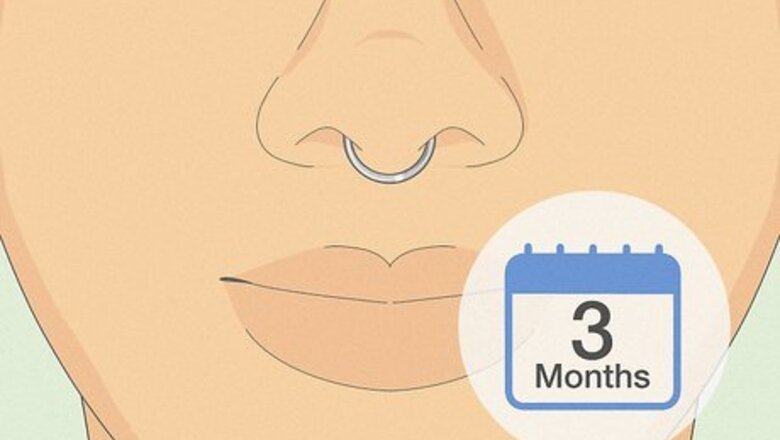
views
Sterilizing Your Workspace and Tools
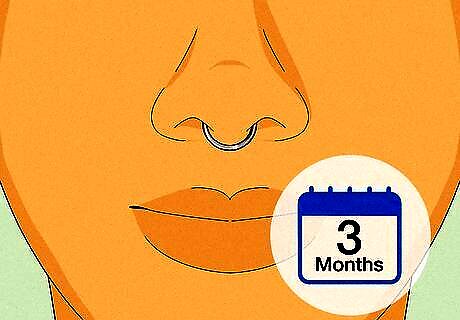
Wait three months after the initial piercing. Depending on the location of your piercing, you will need to wait at least three months before changing your ring or hardware. This allows the skin to heal and will make it possible for you to insert a new ring without tearing. If you choose to change your ring earlier or would just like some extra help, which is quite common, go visit your piercer. Many people go ahead and schedule with their piercer for the first change and then do subsequent changes themselves.

Wipe down your work area. Don a pair of cleaning gloves and get a fresh rag or paper towels. Apply a surface disinfectant to the workspace and wipe thoroughly. A disinfectant will kill any fungi or bacteria that could infect your piercing. After the space is clean, make sure that you only place disinfected items on it from here on out. You can also opt for a disinfectant wipe. It is best if your workspace is a flat, hard table with plenty of space for your tools.
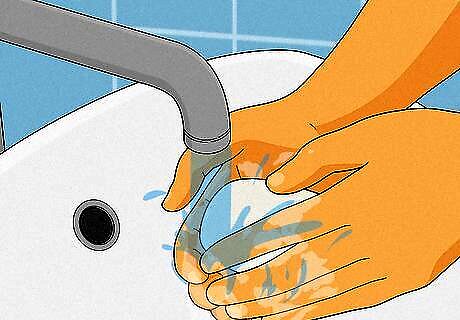
Wash your hands. Remove your workspace cleaning gloves and wash your hands thoroughly under warm water. Make sure that you cover all surfaces of your hands. It should take you between 40-60 seconds to complete a solid washing. You could also apply an alcohol-based hand sanitizer, if you prefer. Feel free to wash your hands as many times as you want during this process. If you do it properly, it will only lessen the possibility of infection. You could also wear a pair of latex or medical-grade gloves. However, if they don't fit you correctly, they may make it more difficult to handle your ring.
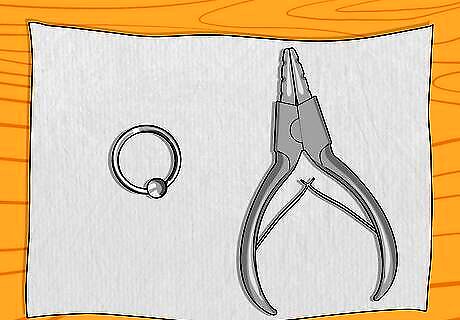
Sterilize the captive ring and your tools. If your captive ring is in a sterilized bag, then you can simply remove it and place it on your table (perhaps on a paper towel, too). If your captive ring is not sterile, then you will want to wash it with warm soap and water. Or, place it into an ultrasonic cleaner. The same goes for any tools that you'll need to use, such as a pair of jewelry pliers. Check to make sure that the sterile package is not broken or torn in any way. If it is, make sure to fully inspect and clean the ring. EXPERT TIP Roger Rodriguez Roger Rodriguez Piercing Specialist Roger Rodriguez, also known as Roger Rabb!t, is the Owner of Ancient Adornments Body Piercing, a piercing studio based in the Los Angeles, California area. With over 25 years of piercing experience, Roger has become the co-owner of several piercing studios such as ENVY Body Piercing and Rebel Rebel Ear Piercing and teaches the craft of body piercing at Ancient Adornments. He is a member of the Association of Professional Piercers (APP). Roger Rodriguez Roger Rodriguez Piercing Specialist Did You Know? An ultrasonic cleaner uses a specific detergent to clean the tools and remove any debris that might be on them.
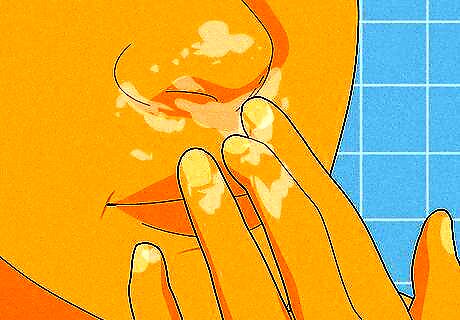
Clean the pierced area with warm water and soap. Do not scrub and gently dry the area with a paper towel when you are finished. Then, go ahead and remove the ring or other jewelry that you are wearing. If the ring feels stuck, apply a small dot of liquid soap to the piercing area, as it will help it to slide out. If you experience any pain or irritation when trying to remove your jewelry, stop and contact your piercer for help.
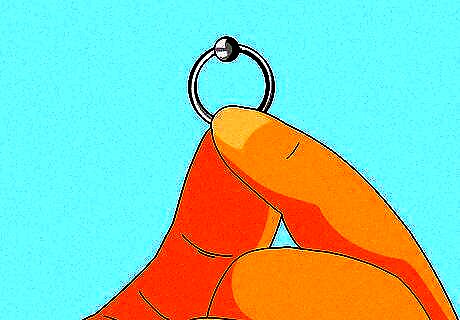
Identify your type of captive ring. When you get your piercing, talk with your technician about what size of ring you will need. If you go with a heavier ring, then you will likely need to use pliers for insertions and removals. You can also opt for a traditional ring with a dimpled ball or a snap-fit style ring with springs that will require pliers to handle. Elayne Angel Elayne Angel, Piercing Consultant When choosing a captive ring, it is important to make sure that the diameter of the ring is large enough to accommodate the swelling that is likely to occur after piercing. It is also important to choose a ring that is made of a high-quality material, such as surgical steel or titanium.
Inserting Small Gauge and Traditional Captive Rings
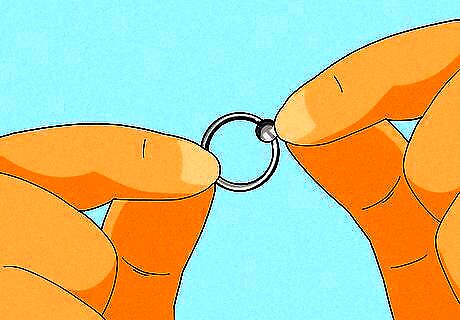
Pick up the jewelry with both hands. Take a moment to steady your hands. Reach down and grab the ring with the index finger and thumb of one hand. Use the index finger and thumb of your other hand to grab the bead. If you have difficulty manipulating the ring with your hands in this position, try placing both hands on the ring itself, positioning your fingers on the opposite sides of the bead or ball.
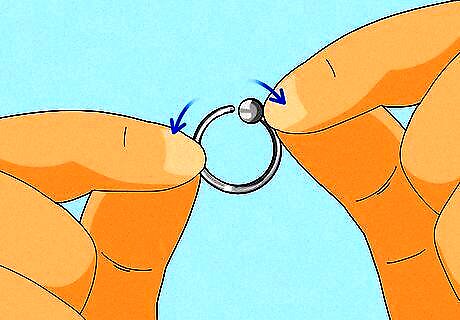
Pull the ring apart slowly. Holding both pieces of the ring, twist slightly and apply measured force until the ball comes free. Make sure that you have your fingers on the ball as it comes free, or you might drop it on the ground or on the table. Once the ring and ball are separate, set the ball on the table. With traditional captive rings, tension is the reason that the ball stays in place in the ring. By twisting the ring, you loosen this tension just enough so that the ball can move or drop out. If you accidentally drop the ball or ring, make sure to sterilize the jewelry again before continuing.
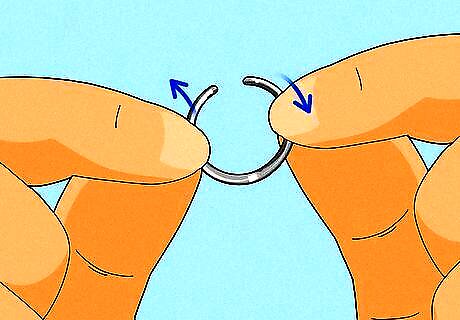
Twist the ring. With both hands on opposite sides of the opening in the ring, carefully twist the two ends in opposite directions. Turn your right hand clockwise and your left hand counterclockwise. The ring should look like a slight spiral. When twisted into this shape, it should be easier to slide into your piercing.
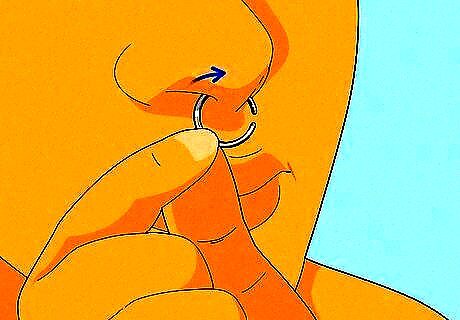
Slide the ring into the piercing. Insert one open end into your piercing. Glide the wire of the ring into the piercing until the center of your ring rests inside. The opening of the ring should lie directly across from the piercing itself. You may need to use your fingers to support the skin around the piercing as you slide the jewelry in place.
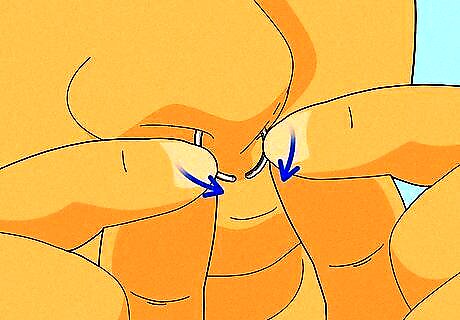
Twist the ring closed. Grab one side of the ring with the index finger and thumb of your right hand. Grab the other side of the ring with the index finger and thumb of your left hand. Apply pressure with both hands to twist the two ends back into place. Your right hand should move counterclockwise and your left hand should move clockwise. When done, the ring should no longer look like a spiral. There will still be a slight gap in the center, but otherwise, it should be back in the shape of a solid ring. If you have excess soap in the piercing area, now is a good time to gently wipe it off with a damp paper towel.

Snap the ball into place. Position the bead so that the dimples on the other side line up with the open ends of the ring. Use your hands to push the bead back into the ring, stopping once it clicks into place. You'll need to steady the ring by holding one side of it with the index finger and thumb of one hand. Use the other hand to push the ball back into place. If properly inserted, the ball should spin with a little resistance. If it spins freely, the ring is too loose. Remove the ball, squeeze the opening in tighter, and re-insert the ball.
Placing Large Gauge and Snap-Fit Captive Rings
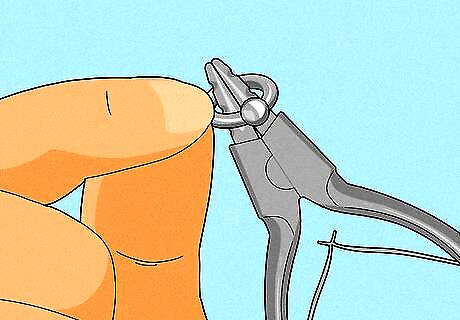
Insert the pliers into the ring. Slide the nose of the ring-opening jewelry pliers into the closed ring. Position the tool so that its opening lines up with the bead or ball of the captive ring. Apply a slight amount of pressure until the captive ring is no longer moveable. Specialty pliers labeled for use with captive rings are your best option, followed by generic ring expanding pliers. If you have no other option, needle nose pliers will also work well enough. Consider covering the pliers with cloth medical tape before using them with your captive ring. Doing so can prevent the tool from scratching jewelry. The tape also adds traction, making it easier to hold the pieces in place.

Grab the ball. Use the index finger and thumb of your free hand to grab the captive ring bead. Or, you can use a ball grabber tool to reach out to the captive bead. Placing a slight amount of pressure on the ring pliers will cause the ball to become loose. Make sure to grab it with your free hand before it falls. Be very careful with the amount of pressure that you apply with the pliers or you will risk altering the shape of your ring.
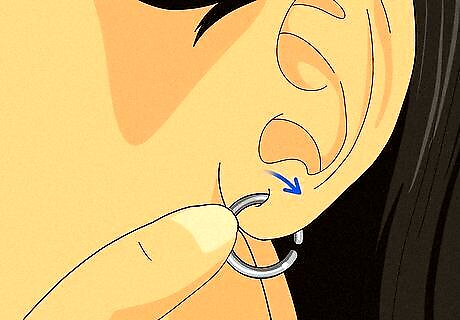
Insert the ring into the piercing. Continuing to use your pliers, or switching to your hands if you prefer, slide one open end of the ring into the piercing. Continue gliding the ring through the piercing until the center of the ring rests inside. If the gap is not wide enough for you to maneuver the ring into the piercing, you should use your pliers to expand the opening further. Expand the ring only as much as absolutely needed to avoid warping the shape. For heavier gauges, you should only expand the opening instead of twisting it. The opening of the ring should be positioned directly across from the piercing. If you feel friction or discomfort when you insert the ring, support the skin around the piercing using your fingers.
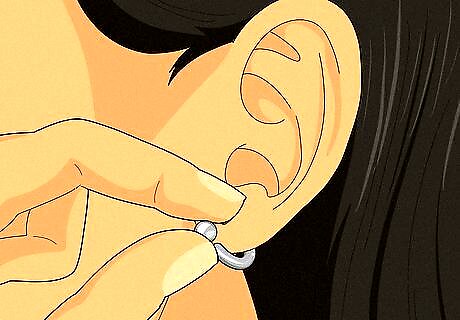
Place the ball in position. Using your hands or a ball grabber tool, line the bead up so that the dimples on either side are aligned with the open ends of the ring. Rest one side of the ring in one of these dimples. With heavier gauges, it is very difficult to snap the bead in place when the ring is nearly closed. As a result, you will need to hold the bead in place as you close the ring instead of waiting until the ring is closed before placing the bead inside. Depending on how much you expanded the opening, you may need to close it slightly with your pliers before setting the ball inside.
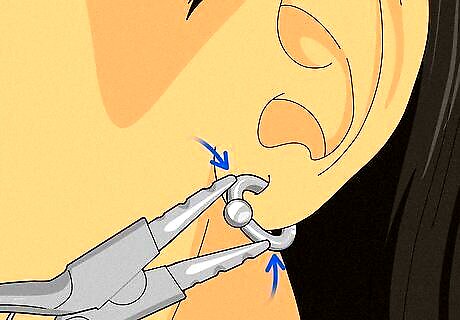
Close the ring using pliers. Place your open pliers around the outside of the open ring. Squeeze the nose of the pliers closed, closing the ring around the bead in the process. Continue closing the ring until both open ends snap into the dimples of the bead or ball. When the captive ring is properly put together, you should be able to spin the ball with a little resistance. If the ball spins too freely, you should close the ring a little further.




















Comments
0 comment